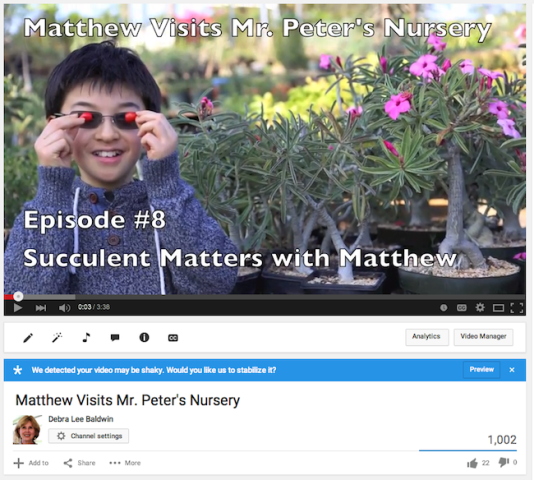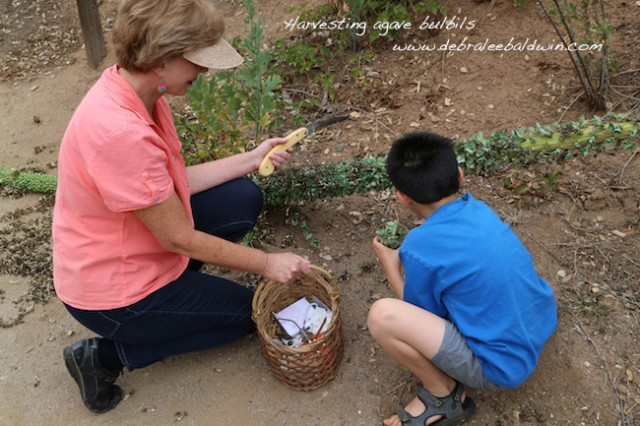
When young succulent horticulturist Matthew Wong, 11, visited, we cut down the bloom spike of my octopus agave and harvested bulbils.
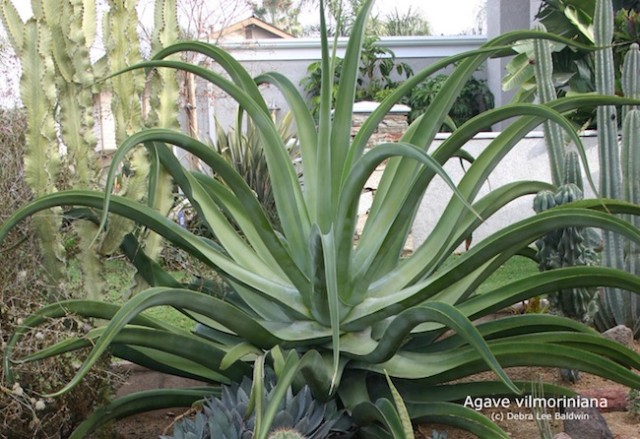
Octopus agave (Agave vilmoriniana) grows to about 4 feet in diameter and 5 feet tall. A “soft” agave, its leaves lack teeth and its tips come to a point but are not sharp. In the landscape, it provides a graceful, fountainlike form.
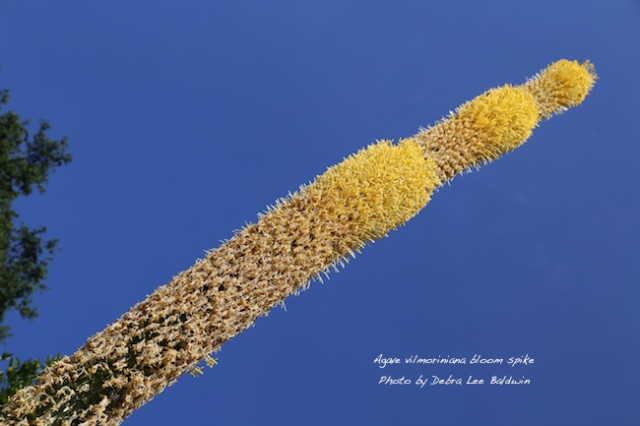 Mine decided to bloom after it had been in the ground eight years. It’s bittersweet when an agave blooms. You know the mother plant will die, but you also get to witness something infrequent and amazing.
Mine decided to bloom after it had been in the ground eight years. It’s bittersweet when an agave blooms. You know the mother plant will die, but you also get to witness something infrequent and amazing.
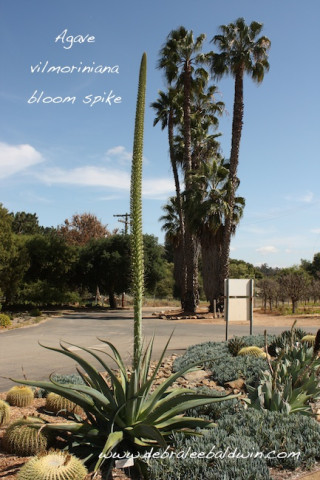 When an agave decides to bloom, there’s no persuading it not to. The bloom spike typically grows several inches a day until it towers over the plant. It’s covered with flower buds.
When an agave decides to bloom, there’s no persuading it not to. The bloom spike typically grows several inches a day until it towers over the plant. It’s covered with flower buds.

These open into yellow flowers that attract bees. Once pollinated, a flower loses its petals and produces new little leaves. Its bulbous base remains attached to the trunk, so pretty soon the flower spike is covered with tiny clones of the mother plant. The entire process takes several months.
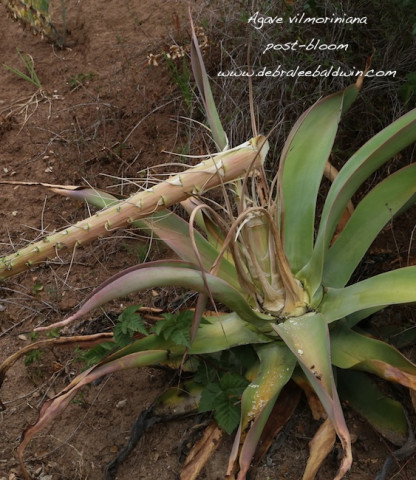
It took me only a minute to saw through the stalk’s 4-inch-diameter, corky wood. The agave’s 10-foot bloom spike fell to the ground at Matthew’s feet.

Dried flower petals clung to the spike (they’re the brown stuff in the photo). Matthew and I gently twisted off the best and biggest of the bulbils.
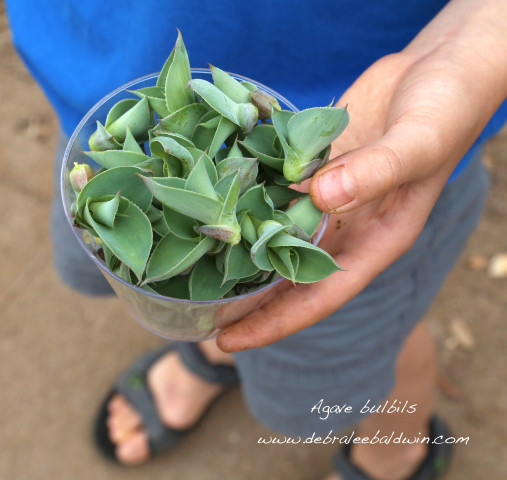
I lined a nursery flat with window screen (so soil wouldn’t fall through the gaps), added potting soil, then planted two dozen bulbils in rows. In about six months they’ll have rooted, grown and will be ready to separate and plant in 4-inch nursery pots. Once they outgrow those pots, they’ll be ready to go in the ground.
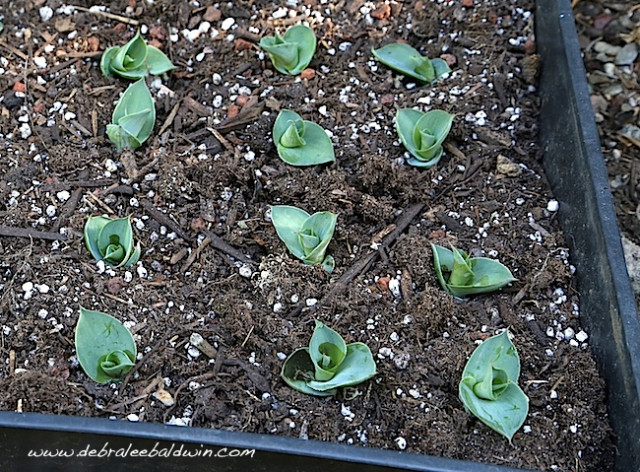
I have no need for more than one or two octopus agaves, so I don’t know what I’ll do with the rest…give them away, probably. (Want one?) Matthew took home a handful. Hundreds more still cling to the fallen bloom spike. I’m going to leave it on the ground and observe it as it dries and the baby plants either dry with it or continue to pull nourishment from it. Perhaps a few will establish themselves and eventually replace the mother plant. After all, that’s what happens in nature.
P.S. Am I exaggerating when I say Matthew Wong is a succulent horticulturist? Decide for yourself. See my “Succulent Matters with Matthew” series on my YouTube channel. Here’s the latest.

